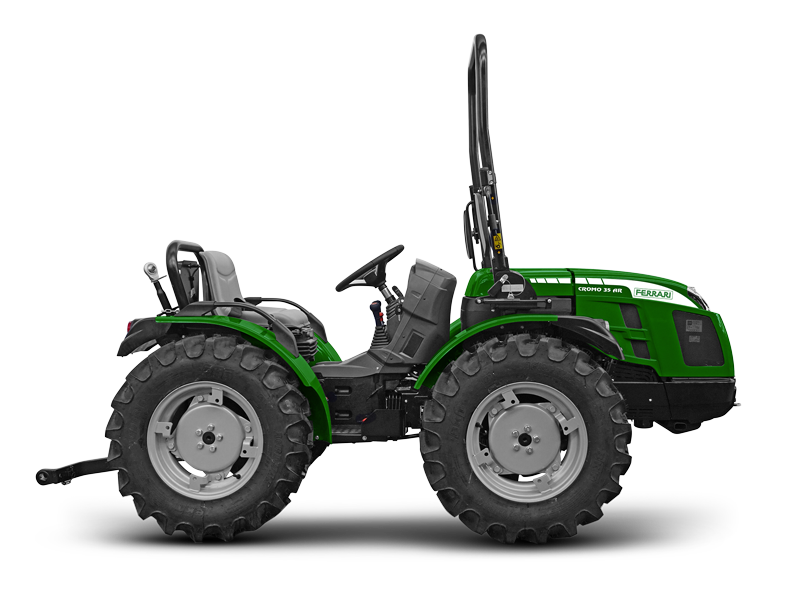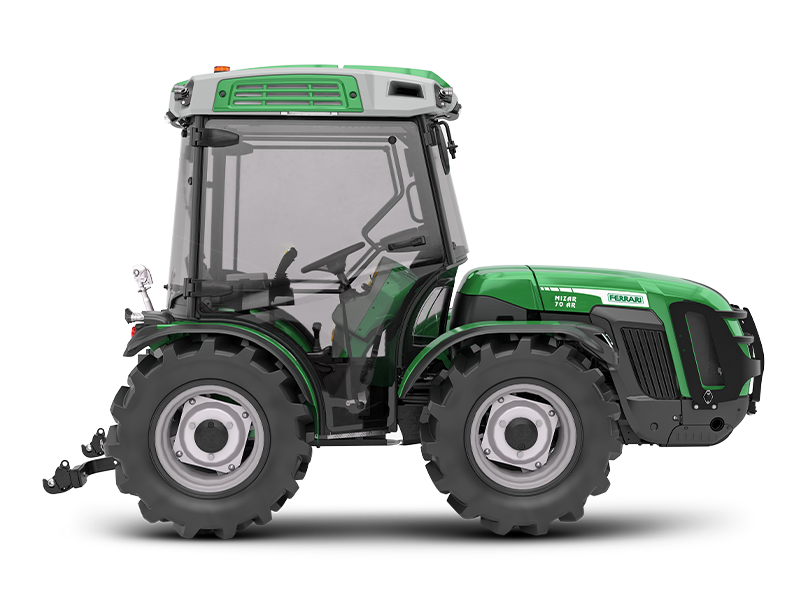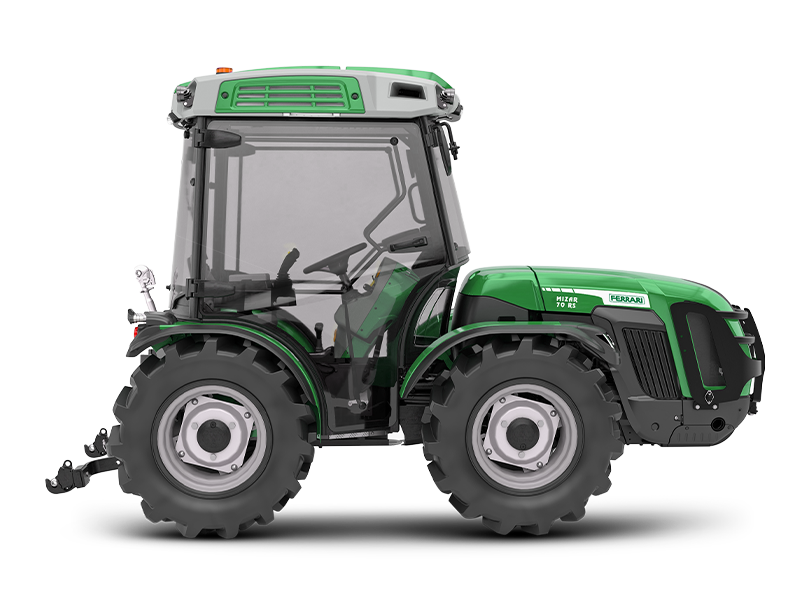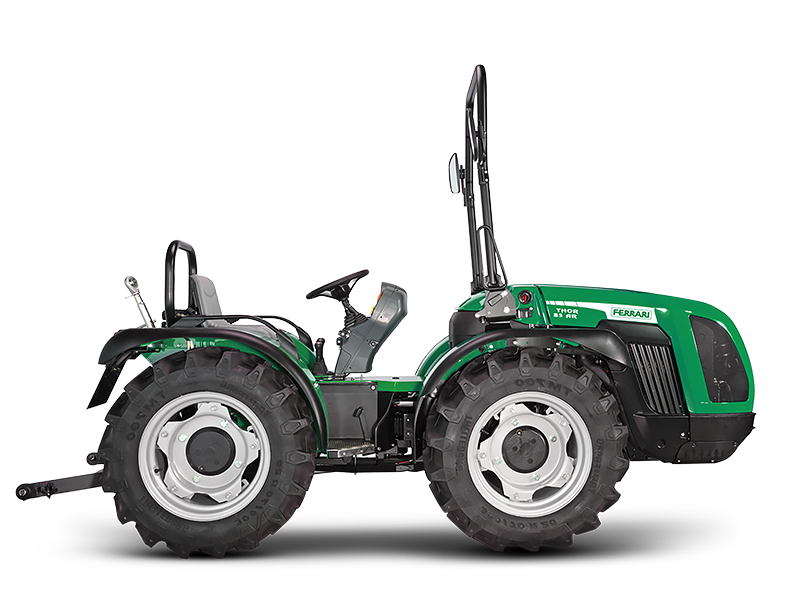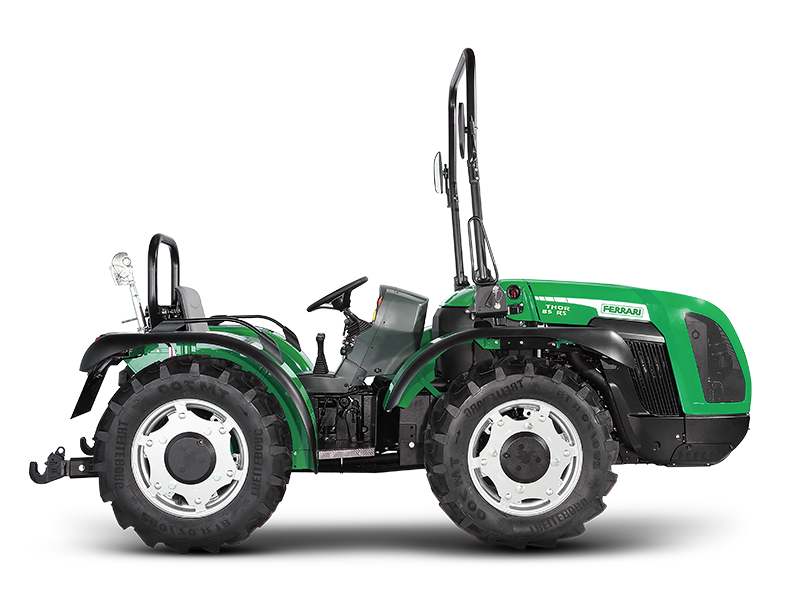
Greenhouse
Professionalism in greenhouse work.
Greenhouse mechanisation is constantly growing to address in an increasingly professional manner the space limitations associated with indoor cultivation.
The spread of this type of farming, in particular in the horticulture-nursery sector, is linked to a number of advantages: greenhouse cultivation makes it possible to bring forward seasonal productions and extend cultivation times throughout the year with several crop cycles, with the possibility of producing plants and vegetables out of season.
The aim of mechanisation is specifically to address the need to operate within enclosed spaces, maximising the benefits offered by this sector of specialised agriculture.
Excellent manoeuvrability.
The main aim of FERRARI greenhouse tractors is to make it possible to move within covered facilities without any difficulties, overcoming space limitations due to low heights and widths and any curved walls.
Featuring low heights and low driving position, FERRARI tractors are perfectly suited to carrying out work inside greenhouses.
At the same time they offer excellent weight/power ratio and short wheelbase, featuring good manoeuvrability and steering in the limited space available.
These machines are made even nimbler if in the isodiametric version with ‘AR’ central articulation or if fitted with the exclusive ‘Dualsteer®’ dual steering system with central articulation and front steering wheels, also in the ‘SDT’ version with differentiated wheels.
For advanced, sustainable agriculture.
One of the most exclusive features of FERRARI tractors is the utmost respect for the soil inside greenhouses, with a view to ever more advanced and sustainable agriculture.
That is thanks to the low weight of these tractors and the option of equipping the vehicles with a variety of tyre size and widths.
Based on this choice, it is possible to increase the tractor’s ground clearance, always keeping the wheels within the ruts, and to increase the vehicle’s floating ability during soil preparation operations, further reducing compaction, thereby protecting soil structure and fertility.




